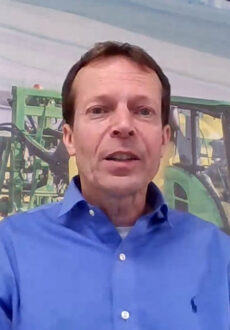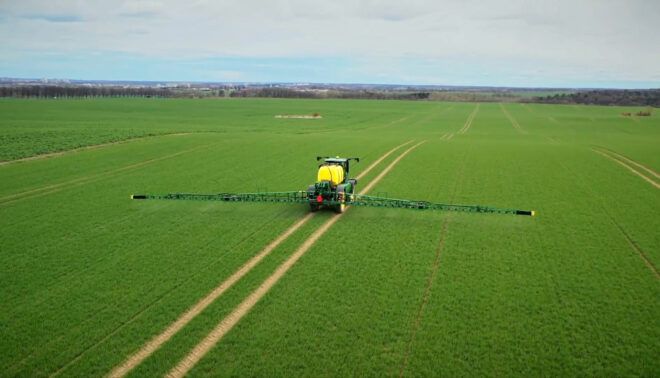High yields provide growing populations with the food they need and farmers with the income they depend on. However, high yields can only be achieved by ensuring that crops reach full maturity and are protected against weeds. Such a task demands that farmers give equal consideration to efficiency, sustainability and practicability when choosing the right cultivation methods for their crops. Modern technologies and efficient farming practices help farmers to apply crop protection agents in a much more targeted and precise manner, benefiting not only the environment but also their own wallets.
One of these exciting new technologies now available to farmers is site-specific (or selective) weed control, based on the so-called offline method. In the first stage of the method, detailed information is gathered about the exact condition of a field and the weed population living there. The farmer can then use this information to apply herbicides in the most targeted way possible.
We use the drone to take pictures to identify differences in vegetation and work with the information.
Hendrik zu Knyphausen
The agtech start-up Hummingbird offers a prime example of how this weed control method can work in practice. The UK-based start-up flies compact drones over fields to produce detailed maps of the crop population. Hendrik zu Knyphausen, vice president of operations and head of Germany, Central and Eastern Europe at Hummingbird, explains: “By using the drones to take satellite images, we can recognise variations in the vegetation. We then draw on this information to produce prescription maps to facilitate crop protection.”
A “drone’s-eye” view
Once the drone has completed its flight, a clear picture emerges as to where in the field too many weeds have accumulated, according to the damage threshold principle of Integrated Pest Management, and which areas have been less affected. Hummingbird expert Mr Knyphausen explains: “The farmer can then see straight away whether or not it is necessary to spray a given area with a uniform application rate, and can selectively apply herbicides according to the weed incidence. To draw on this information and apply it ‘in the field’, the next step is to create a prescription map to facilitate site-specific product application. The map can then be uploaded directly from the Hummingbird software to the John Deere Operations Centre.” From there, the map is transferred wirelessly or via USB flash drive to the sprayers in the field.
Once they have received the prescription map, the sprayer operators then automatically apply the crop protection agent by precisely pinpointing the areas of the field where the weeds are present. Various John Deere technologies also do their bit to support technological weed control efforts. The use of GPS technology to automatically control boom sections and individual nozzles ensures that crop protection agents are only applied to the necessary field areas. The technology also prevents large spray overlaps, which minimises the risk of overdosing fields and saves on crop protection agent at the same time. Ultrasonic sensors also help ensure that boom sections are always at the correct height and incline over the crop, guaranteeing that the spray is optimally applied to the desired crop target area. This means that even small undulations in the field no longer pose a problem to spray accuracy, and spray drift is minimised.
Hoe and sprayer working in unison

Jørgen Audenaert, crop protection specialist at John Deere.
Even though the sprayer will undoubtedly continue to be indispensable in the future, it is by no means the only tool at a farmer’s disposal. Especially in classic row crops, the hoe can be an efficient alternative or even supplement the use of sprayers. Here it becomes clear that, weather and soil conditions permitting, the hoe represents a non-chemical solution for weed control between rows that doesn’t endanger crop populations. Jørgen Audenaert, crop protection specialist at John Deere, explains how even greater precision can soon be expected from the humble farming tool. “The hoe definitely has a lot of potential and, at John Deere, we are also working hard to improve the productivity and accuracy of the technology – after all, in the past, it has been the comparative inaccuracy and lower area output of the hoe which has often been an obstacle to its wider use.
“Together with Monosem, we are working on delivering high-precision hoeing technology by combining camera and GPS positioning technology. This enables us to precisely position hoeing tools between crop rows, while maintaining active control of both the tractor and the implement. With an increase in tractor driving speed from 8 to 16km/hr, we are achieving significantly higher speeds than are typically seen in mechanical weed control. The fully automated tractor speed control ensures that the user achieves maximum productivity alongside high control success and minimal crop damage.”



